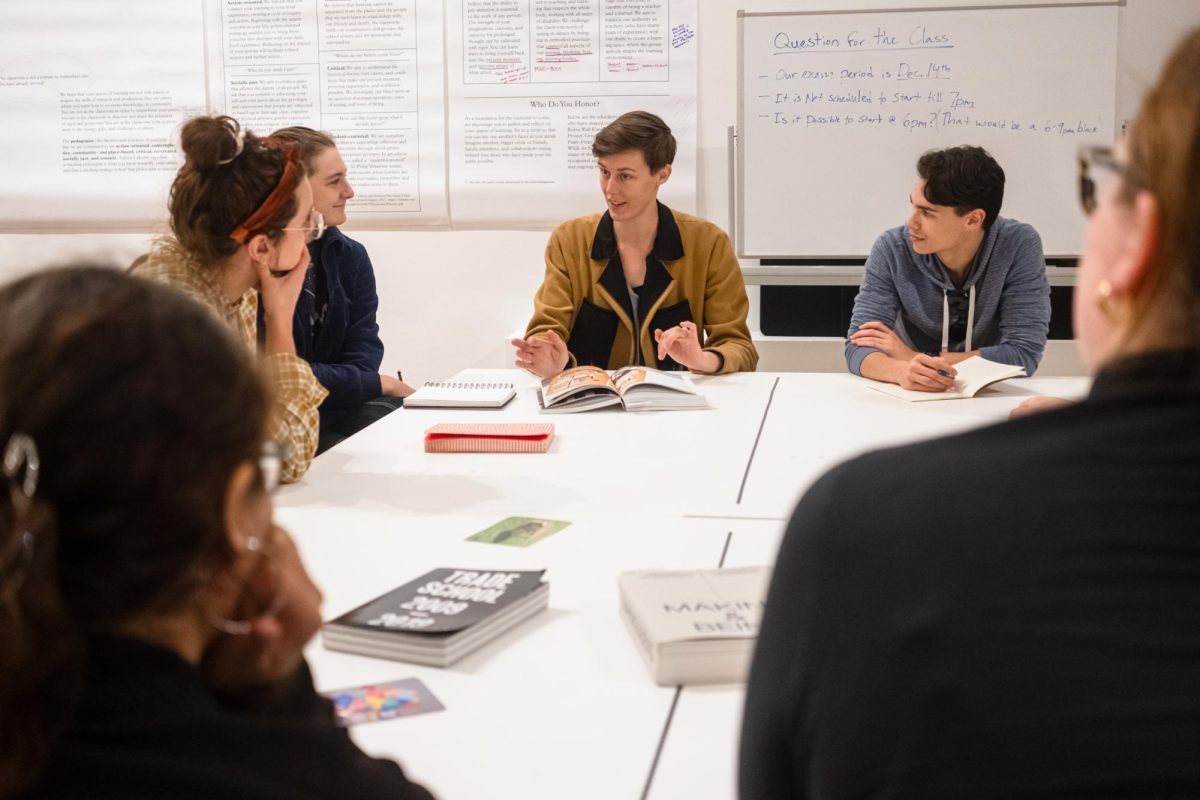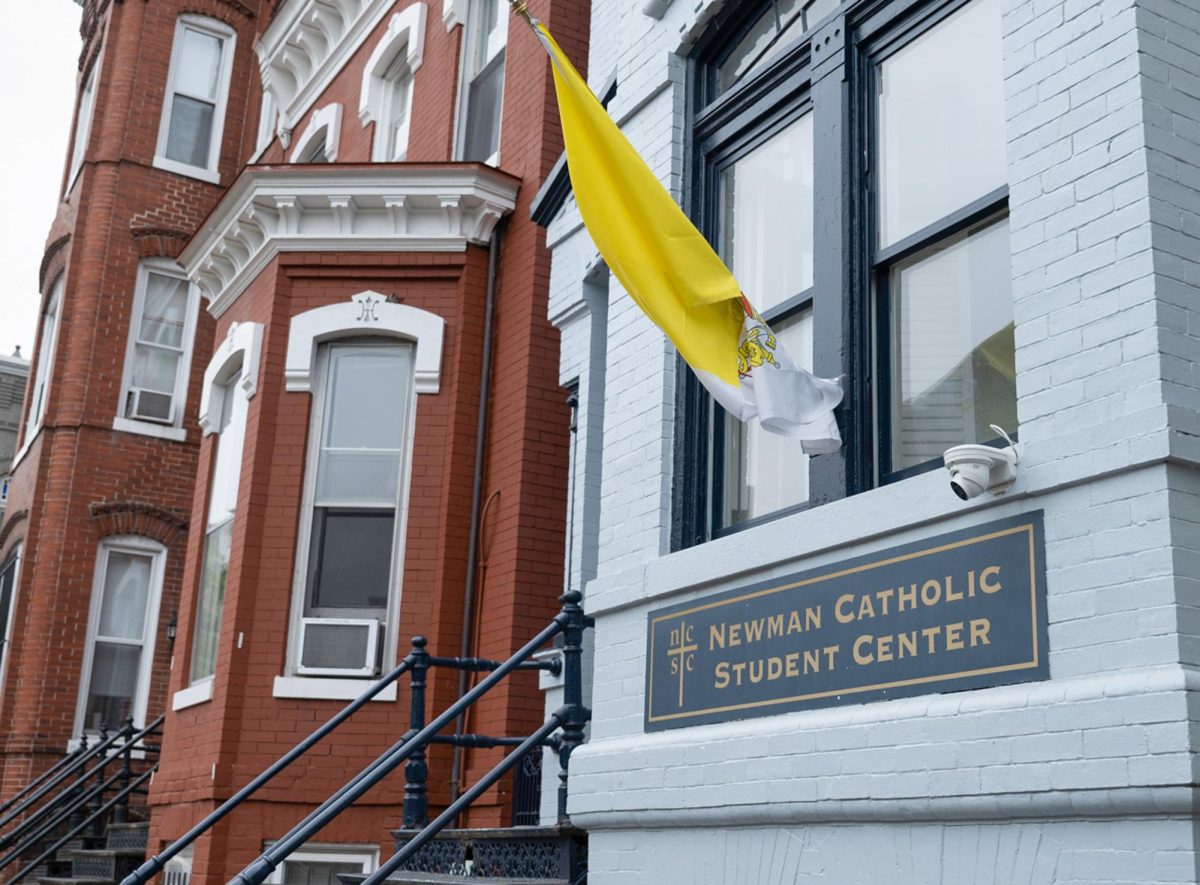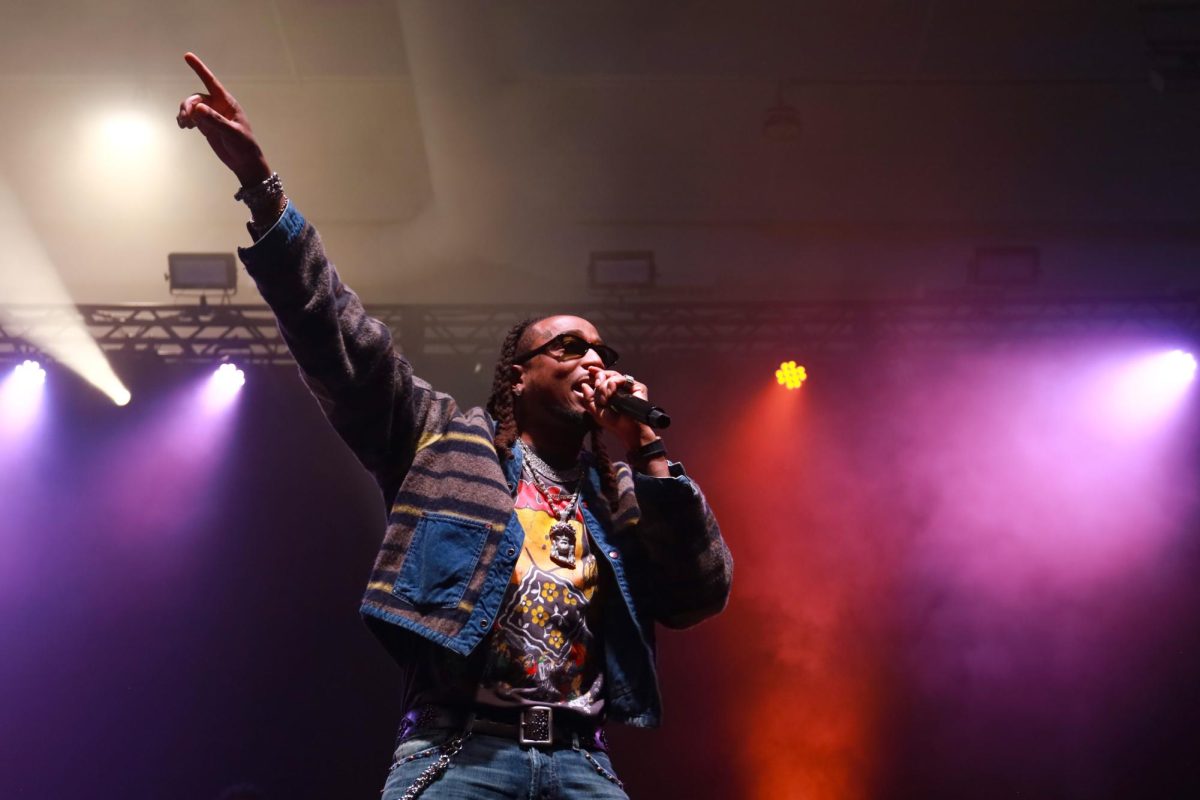Function and utility are at the forefront of a Corcoran College of Arts & Design visiting professor’s sculptural pieces that embody minimalism and sustainable art.
William Wilson Corcoran Visiting Professor of Community Engagement Caroline Woolard is teaching a course each semester this year where she is asking her students to examine the scope of their art-making process, from deliberation and planning to its circulation as a completed work. In her course, “The Art Worlds We Want,” she said students consider how to financially maintain themselves as artists in a time when it’s increasingly difficult for artists to earn a living.
“I’m asking students to imagine the networks or organizations that are aligned with the values that they want, in whatever art world they might want to engage with or create,” Woolard said. “For example, what would it mean if there were more artist-owned enterprises so that artists were paid more and received some of the revenue that they helped create?”
Woolard said she will teach a course each semester during her one year at the University and be given space and materials from officials to create a public project in the spring. She said art is a form of research students across disciplines can leverage art projects toward their goals, be it a sculpture or lengthy essay. She said her students learn how to study a multisensory experience and communicate their visual or emotional findings with their audience by focusing not just on how to make art but also on where it ends up.
“Art-making is a well-recognized pedagogical vehicle that enables learners to synthesize knowledge,” Woolard said over email. “The role of the arts in a liberal arts curriculum is to provide the skills and capacities required for visual and somatic production so that students can determine which approach — an essay, a song or a science experiment — might be most aligned with the ideas in their research.”
Woolard said artists must be interdependent so they are all able to collectively thrive. She said the well-being of people, creating a community and responsible environmental practices are the central tenets of her movement for a solidarity economy, which focuses on helping ensure artists are paid and natural resources are sustainably used over the ruthless pursuit of profit. She said this movement for people over profit exists both in and out of the art world.
Woolard said the foundation for any working economy is keeping workers rested and emotionally supported. In the art world, this means artists need to be able to make a living wage with their work.
She said that while the visibility of a solidarity economy in the United States may be minimal except for some cities, other countries like Germany and Columbia have been able to instill programs that bolster artists, like providing loans at zero percent interest and free training programs. She takes her class to D.C. and New York City to visit worker-owned groups and co-ops to show her students advocacy for sustainable living in practice.
Woolard said that one barrier artists face is the burden of debt from pursuing an art degree. In 2014, Woolard started BFAMFAPhD, an organization that brings together artists, designers and tech workers to discuss the impact of debt on those in creative fields.
These meetings center around the question, “What is a work of art in the age of $120,000 art degrees?” Work from the collective resulted in Woolard and artist-educator Susan Jahoda co-authoring “Making and Being,” a book containing material and strategies like worksheets and activities to help educators make their teaching more equitable and collaborative.
Woolard said that while she was in the District, she spent her time meeting with co-ops like Delicious Democracy and nonprofits like Beloved Community Incubator, which provides support to worker-owned businesses.
In her artistic practice, Woolard said she creates conceptual sculptures — works meant to both act as furniture and help solve conflicts among groups. She said that traditional meeting spaces like drab cubicle-filled offices are transformed into a space of possibility as her works force groups to face each other and focus on the tactility of the sculpture.
“That’s been really satisfying because the objects can live on their own in a gallery, and then be activated by facilitators when the group requests it,” Woolard said.
She exemplifies this in her recent exhibition, “A Stone Holds Water” at the Miriam Gallery in New York City. The purpose of the project was to create a space for people to reflect on ecological and political developments from 2020.
The exhibition included sculptures derived from natural forms like stones and ponds using materials like concrete and terra cotta that are associated with permanence and safety. Those who visited the exhibition could interact with these objects by touching them and submerging them in water while listening to an audio guide that asks them to reflect on the social and economic upheaval caused by activism and the pandemic.
Mia Donalson, Woolard’s apprentice and teaching assistant, said Woolard is interested in creating work inspired by the Fluxus artist movement in the 1960s and ‘70s that was organized around performance, community and ideas that stretch the conceptual boundaries of what is considered art like noise music and experimental literature. Donalson said they are currently working to fabricate ceramic bowl-like vessels to be used in an experiential performance, mimicking a practice of Fluxus artists and simulating the flow of water as one person pours the water from their vessel to the next person’s vessel.
“Caroline heard that those artists during that time would do an event called the aqueous event, sort of like a community that would pass water between a vessel using spoons,” Donalson said. “Caroline’s interested in reformatting that into sort of this half-sphere shape.”
Donalson said the course Woolard is teaching has a combination of graduate students in the Master’s of Fine Arts for Social Practice but also undergraduates majoring in other disciplines and is a mix between a traditional seminar and studio course. They said because of this mix, some students don’t have their own studio space, leaving Gallery 1 in the Flagg Building a colorful amalgamation of projects yet to be finished.
They said that the current art world is monetarily centered, but other formats of value for art, rather than just something that can be bought and sold, are something many artists are interested in.
“Looking at alternative solutions and community support methods to develop and continue pushing for an art world we want that is more focused on other values and not solely on the monetary value of art as a commodity,” Donalson said.







